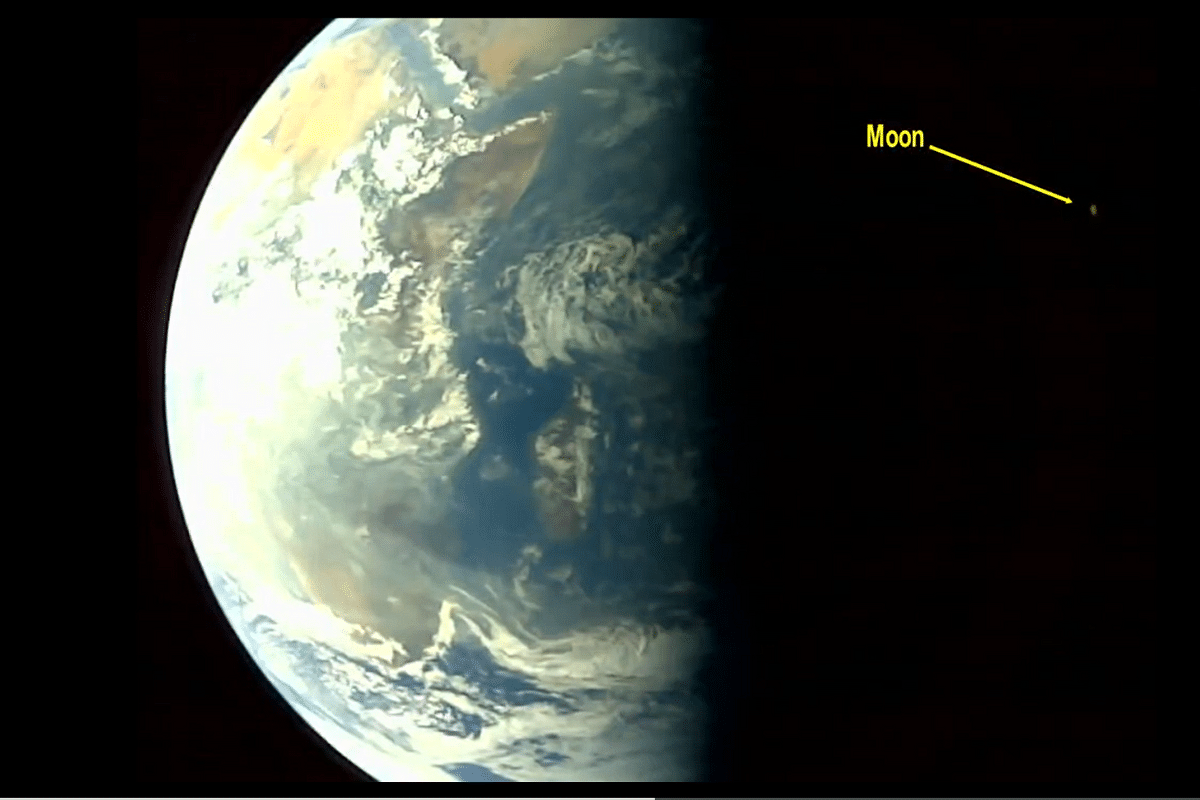Science
Aditya-L1 Turns Photographer — Two Key Instruments Seen In Selfie; Earth And Moon Imaged Too
- Aditya-L1 has imaged two primary scientific instruments on board, as well as the Earth and Moon.

Earth and Moon, as imaged by Aditya-L1
Aditya-L1 is currently circling Earth in a highly elliptical orbit.
Like any tourist navigating a new and exciting place, India's first-ever solar probe is taking pictures and making memories.
The Indian Space Research Organisation (ISRO) on Thursday (7 September) shared a video composed of Aditya-L1's snaps.
The video features a selfie, in which is visible the two primary scientific instruments on board — the Visible Emission Line Coronagraph (VELC) and the Solar Ultra-violet Imaging Telescope (SUIT).
The camera on board Aditya-L1 has also captured the Earth and Moon, homes to us and our Vikram-Pragyan spacecraft, respectively.
See the video here:
The instruments and the Earth and Moon were imaged on Monday (4 September), two days after launch and before the initiation of Earth-bound manoeuvres to raise the Aditya-L1 orbit.
The VELC, developed by the Indian Institute of Astrophysics (IIA), Bengaluru, will study the solar corona and the dynamics of coronal mass ejections.
The SUIT, developed by the Inter University Centre for Astronomy and Astrophysics (IUCAA), Pune, will image the solar photosphere and chromosphere in near-ultra-violet (UV) and measure the solar irradiance variations in near-UV.
Both VELC and SUIT were developed in close collaboration with ISRO.
Since its second orbit raise last Tuesday (5 September), Aditya-L1 is in a 282 km x 40,225 km orbit. This means that at its farthest point in the orbit around Earth, the solar spacecraft is over 40,000 km away.
The next move to raise Aditya-L1's orbit further will take place at around 2.30 am, India time, on Sunday (10 September).
Five Earth-bound manoeuvres are planned for Aditya-L1, each one taking the solar craft further away from Earth.
By the end of it, Aditya-L1 will have picked up the velocity necessary for a long journey to the Sun-Earth Lagrange point L1.
Then begins an approximately 110-day journey to the vicinity of L1.
Once Aditya-L1 nears its destination, ISRO will execute a manoeuvre to bind the spacecraft to an orbit around L1.
The total journey time from Earth to L1, spanning a distance of about 15 lakh kilometres, is estimated to be about four months.
Support Swarajya's 50 Ground Reports Project & Sponsor A Story
Every general election Swarajya does a 50 ground reports project.
Aimed only at serious readers and those who appreciate the nuances of political undercurrents, the project provides a sense of India's electoral landscape. As you know, these reports are produced after considerable investment of travel, time and effort on the ground.
This time too we've kicked off the project in style and have covered over 30 constituencies already. If you're someone who appreciates such work and have enjoyed our coverage please consider sponsoring a ground report for just Rs 2999 to Rs 19,999 - it goes a long way in helping us produce more quality reportage.
You can also back this project by becoming a subscriber for as little as Rs 999 - so do click on this links and choose a plan that suits you and back us.
Click below to contribute.
Latest